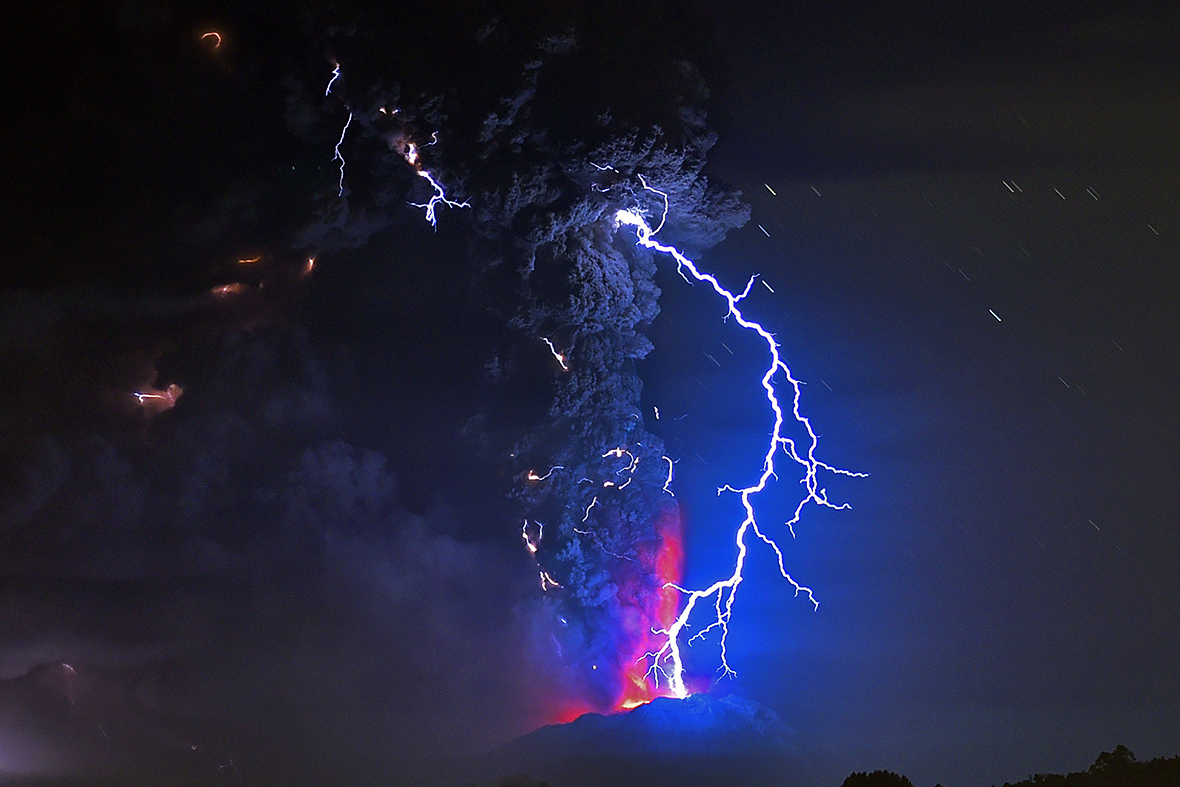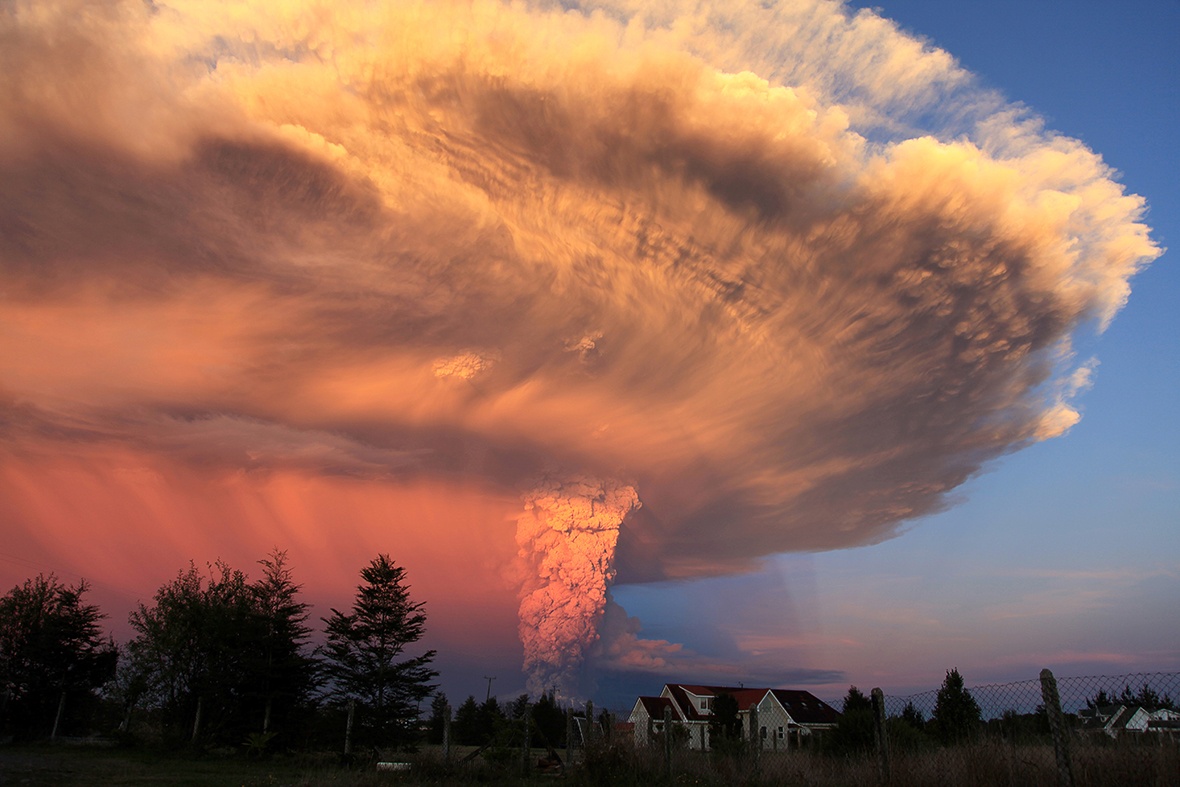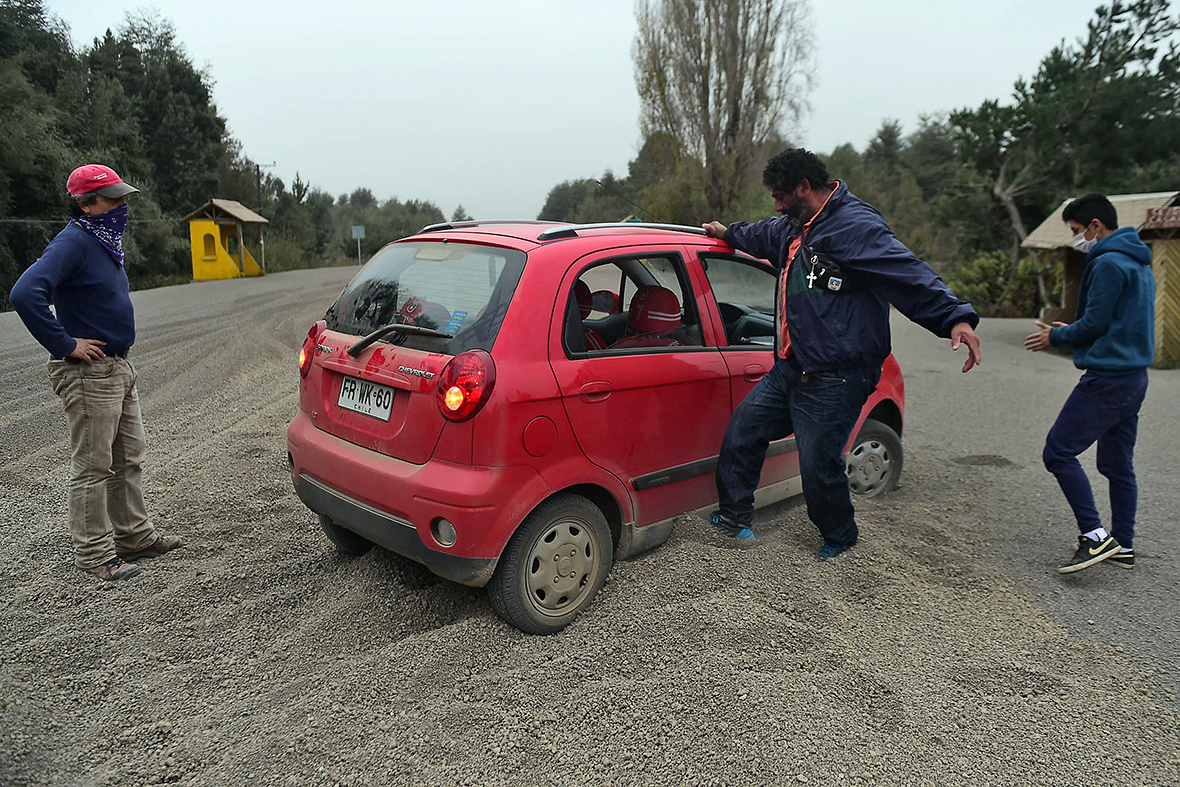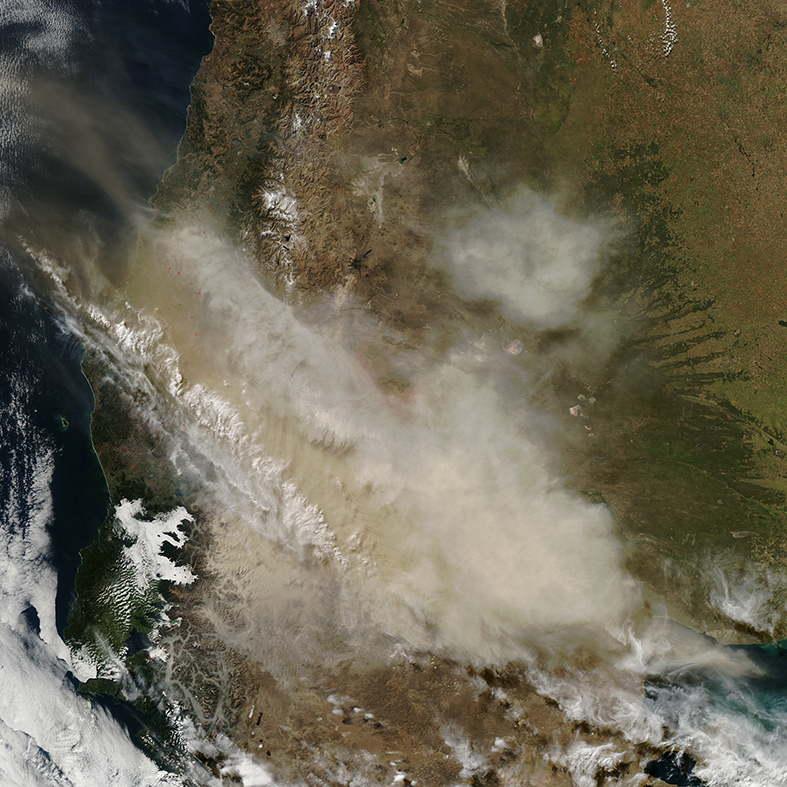Chile's spectacular Calbuco volcano eruption: Lightning, lava and a ghost town covered in ash [Photos]
The Calbuco volcano in southern Chile erupted unexpectedly on Wednesday 22 and Thursday 23 April, blanketing local towns in ash and forcing the cancellation of flights from cities in both Chile and Argentina.
The volcano erupted on Wednesday afternoon for the first time in more than four decades, spewing out a plume of ash more than six miles (10km) high. Emergency officials were taken by surprise and had only a few minutes to issue an alert.
Calbuco had another spectacular outburst early on Thursday with lightning crackling through a dark sky turned reddish orange by the explosion.
Volcanic lightning (also known as a "dirty thunderstorm") is a rare, short‑lived phenomenon probably caused by the static electrical charges resulting from the crashing together of fragments of red‑hot rock, ash and vapour high in the volcanic plume.





The twin blasts sent vast clouds of ash into the sky, covering the small town of Ensenada with thick ash and raising concerns that the dust could contaminate water, cause respiratory illnesses and ground more flights.
Ensenada, in the foothills of the volcano, looked like a ghost town but for an occasional horse or dog roaming its only street. Most of the 1,500 residents had evacuated after the initial eruption, with about 30 people refusing to leave out of worry for their homes and animals.
Nearly 4,500 people have been evacuated from the immediate area, authorities said, with the emergency services focusing on Ensenada.








"People went into a state of panic," said Miguel Silva Diaz, an engineer who lives in Puerto Montt, a city about 14 miles (22km) from the volcano. "Then, at around 1am, I heard a loud noise, as if somebody had detonated an atomic bomb."
Winds are carrying part of the ash cloud towards the Chilean capital. Most of the ash, however, is headed over the Andes mountains into neighbouring Argentina, and weather experts said it could reach as far as Buenos Aires province, some 1,500km to the east.


Chile, on the Pacific Ring of Fire, has the second largest chain of volcanoes in the world after Indonesia, including about 500 that are potentially active.
© Copyright IBTimes 2024. All rights reserved.






